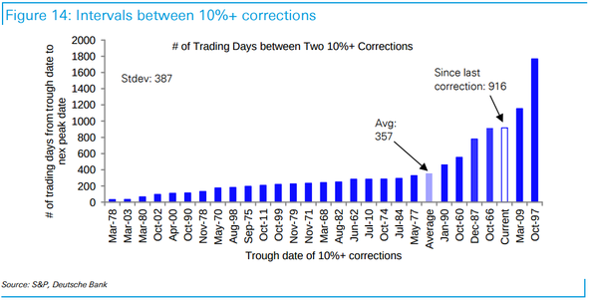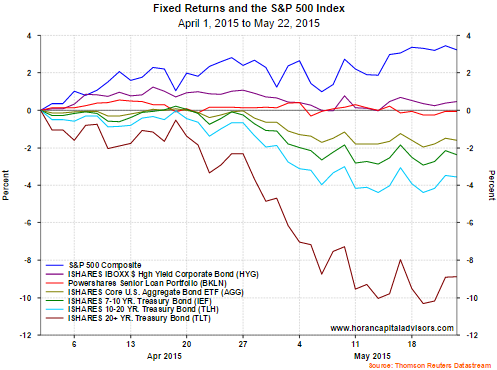One issue on the minds of a number of investors is the near term potential for an equity market correction. One's thinking is framed by the fact the S&P 500 Index has not incurred a 10+% correction in three and a half years or 916 trading days. This is the third longest streak as can be seen in the below chart. Include the fact first quarter 2015 earnings were not that great from a growth perspective, the economy (GDP) is growing at a snails pace and euro zone issues (Greece and now maybe Spain), it is not surprising investors are a little on edge.
 |
| From Blog of HORAN Capital Advisors 5 2015 |
I believe Ben Carson, who writes commentary at A Wealth of Common Sense, addressed the correction thinking well in a recent post, To Win You have to be Willing to Lose. I am going to list just a few highlights from the article, but readers will find the entire article a worthwhile read.
"There are two types of investors out there today (and yes this is an extreme over-generalization):"Both stances are potentially dangerous because they set you up to over-react to the market’s movements. One of the first things you have to realize as an investor is that to earn a respectable return on your capital, you have to be willing to lose money on occasion — sometimes a lot of money."
- "Those who spend all their time obsessing over the next 5-10% correction and when it will happen.
- "Those who are becoming complacent to the risk of a correction or a bear market.
His article includes a chart, by calendar year going back to 1950, showing the maximum market decline in each calendar year. In short, he notes,
- "Just over 50% of all annual periods since 1950 saw a 10% correction or worse. So every other year investors had to deal with double digit loss at some point throughout the year. To be specific, there were 34 years with a double digit drawdowns. But 20 of those periods actually finished the year with a gain. So almost 60% of all years with a drawdown in excess of 10% still finished the year in positive territory."
- "Since 1950, the S&P 500 has never finished the calendar year with a loss when there wasn’t a double digit correction at some point during the year. So in 31 out of 65 years in this sample set, stocks finished with a gain every single time when they managed to avoid a double digit drawdown."
Just as investors are concerned about the extended run in large cap U.S. equities, a similar concern might be directed to bonds. I discussed the below chart (updated) in a post last week, Bonds Performed Poorly Leading Up To Release of Fed Minutes, which shows the price decline in various bond asset segments. Long term treasuries continue to be down nearly 10% since only the beginning of April.
 |
| From Blog of HORAN Capital Advisors 5 2015 |
The conclusion for investors concerned about an equity market correction, a similar fate could be experienced by the bond market. Certainly a near term correction in stocks and/or bonds would not surprise our firm. Importantly, now is a good time for investors to evaluate the asset allocation within their investment portfolios. Selling stocks/bonds and sitting in cash that earns nearly zero percent interest could be a losing strategy if rates stay down longer than anticipated or the equity market streak challenges the longest streak of about 1,767 trading days. On the other hand, after an investor reviews their asset allocation, if higher cash levels are suggested, then planning a strategy to implement the change would be warranted.
